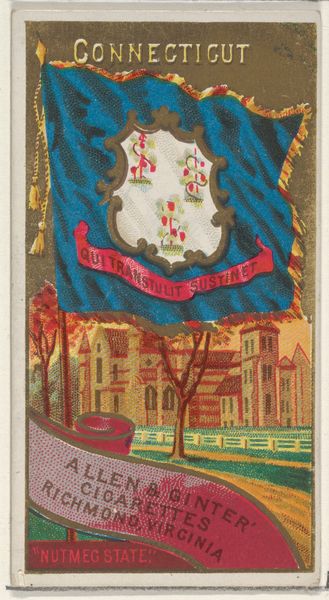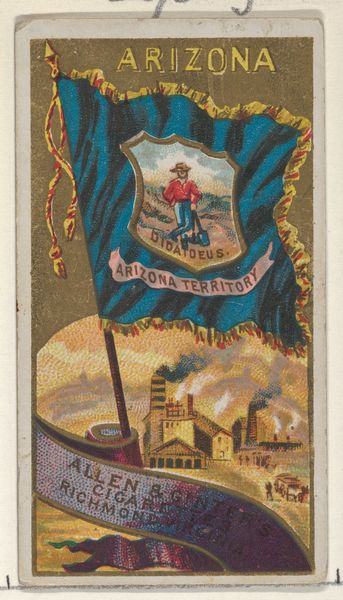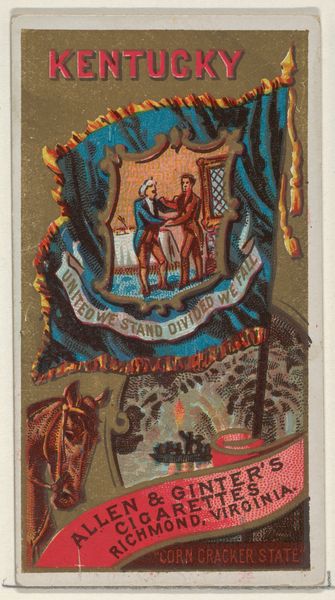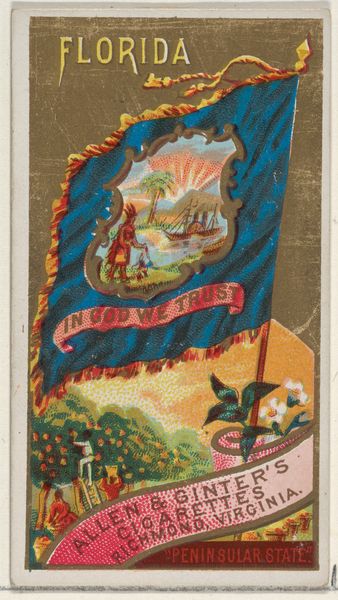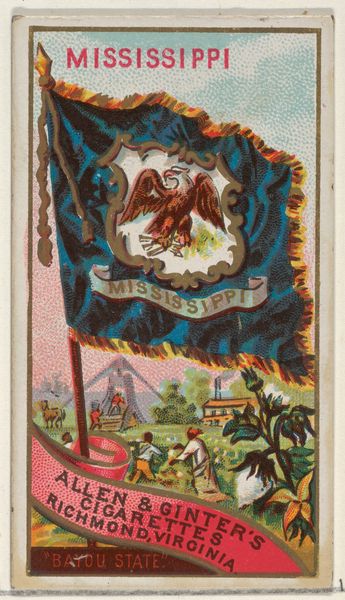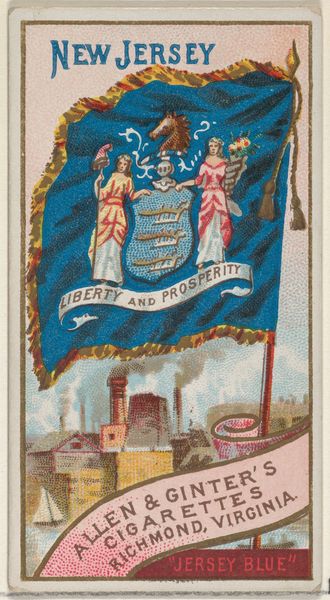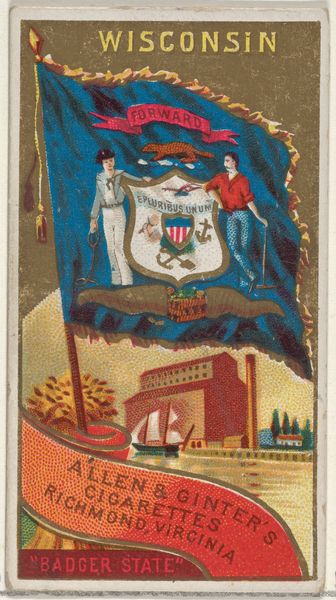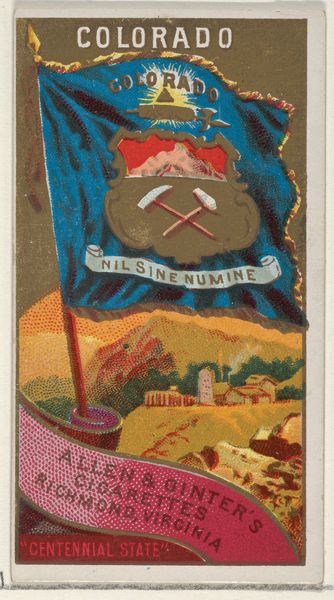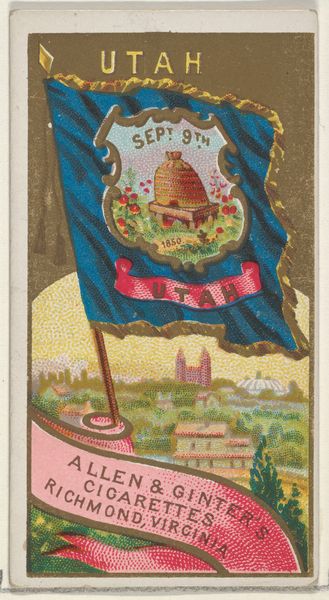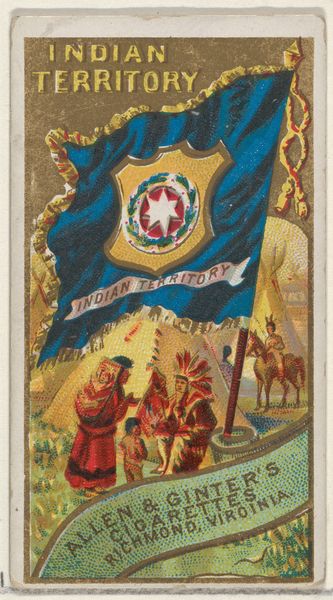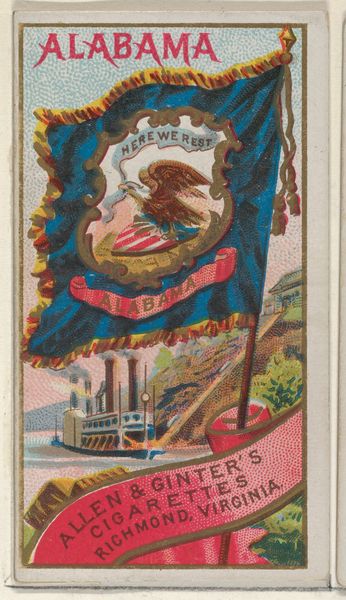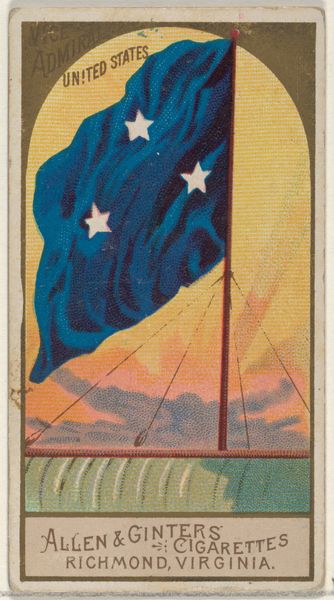
Arkansas, from Flags of the States and Territories (N11) for Allen & Ginter Cigarettes Brands 1888
0:00
0:00
drawing, graphic-art, collage, print
#
drawing
#
graphic-art
#
collage
# print
#
orientalism
Dimensions: Sheet: 2 3/4 x 1 1/2 in. (7 x 3.8 cm)
Copyright: Public Domain
Editor: This is “Arkansas, from Flags of the States and Territories," created around 1888 by Allen & Ginter, primarily using drawing and printing techniques in this graphic art collage. It's small, and ornate. What's striking is how something so clearly commercial includes imagery alluding to state power, but in such a simplified, mass-produced way. What do you see in this piece? Curator: It’s fascinating to view this as a material object, first. Consider its origin – a cigarette card. Tobacco companies used these collectible cards as a marketing tool, inserting them into packs of cigarettes. The image of the Arkansas state flag, therefore, becomes intrinsically linked to consumption and commerce, moving away from just civic representation. Who were the laborers printing these? Where did the paper pulp come from? Editor: I hadn’t thought about the literal means of its production like that! It almost cheapens the symbol of the flag to be an advertisement, right? Curator: Does it cheapen, or democratize? Cigarette cards were widely distributed. What was the socioeconomic background of people buying those cigarettes and handling this image? Furthermore, let's examine the printing process itself. It likely involved industrial printing methods, potentially using recently developed technologies. The inks, the paper stock – all contribute to our understanding of material culture at the time. Do you notice anything about the portrayal of Arkansas itself in the background imagery beneath the flag? Editor: Yes, that small riverboat is definitely a statement on early industry and transportation. So it sounds like you’re saying the value in this image, really, is less in the symbolic depiction of Arkansas, and more in what it can tell us about consumerism, labor, and materials in the late 19th century? Curator: Exactly. The art lies in its context. Examining the layers of material production and consumption habits helps us reveal hidden societal values and economic forces embedded within seemingly simple images. Editor: Wow, I never would have thought to look at a cigarette card in such depth. Thanks! Curator: Of course! Considering the production process opens doors for new discussions about labor and the commodification of national symbols.
Comments
No comments
Be the first to comment and join the conversation on the ultimate creative platform.
